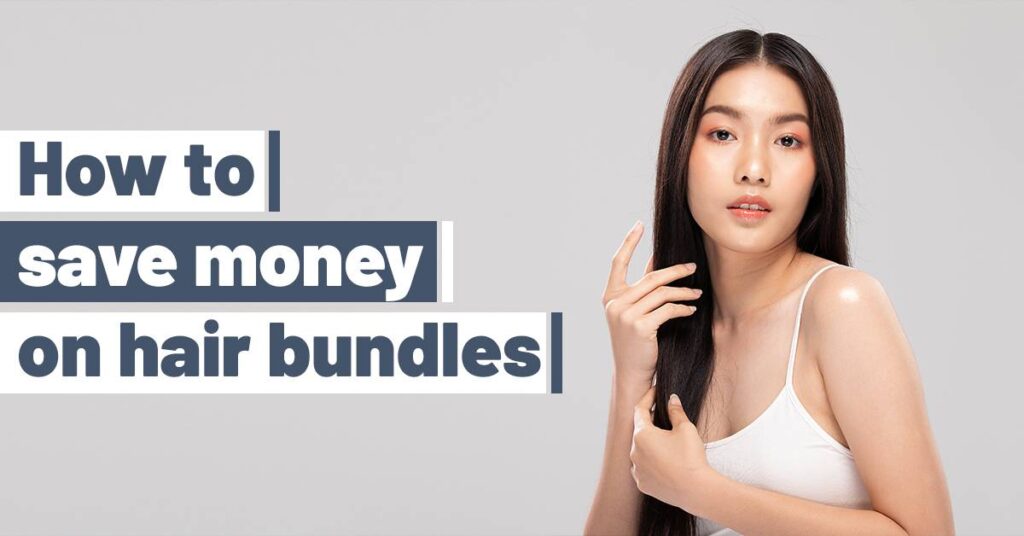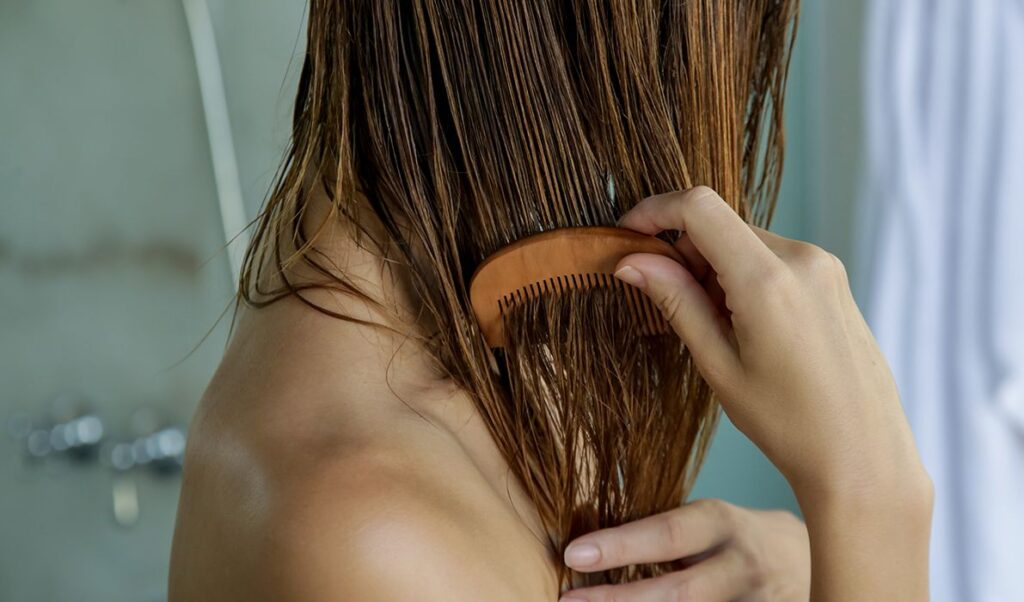Unlock Confidence: The Best Hair Extensions for Thin Hair
You may be eager to fill out your thin or fine hair, but some hair extensions have a reputation for causing damage. Choosing the right approach can make all the difference between having beautiful hair and long-lasting damage. This article will discuss the best hair extensions for thin hair.
When choosing hair extensions, there are two important factors to consider. If you have fine hair, concealing your extensions may be more challenging. Therefore, selecting extensions that are easier to hide to achieve a seamless and flawless look is recommended. Additionally, finer hair is generally weaker than coarser hair, so it’s best to choose lighter extensions to avoid any potential damage to your hair.

Table of Contents
Thin vs. Damaged Hair
Thin and fine hair isn’t the same as damaged and fragile hair. It’s perfectly fine to attach hair extensions to healthy, thin hair. Your main concern would be being gentle on your own extensions and having practically invisible extensions.
Hair that is severely damaged should not be connected to your strands. Picture this: if 50 strands of your own hair support 1 K-Tip, damaged hair may only have 25 strands capable of bearing any weight. Consequently, when you brush through tangles, you exert a relatively strong force on those 25 strands, leading to some being pulled out by the root. Over time, this process can result in bald spot development.
Best Hair Extensions For Thin Hair
Hair extensions are not all created equal; some can be more harmful than others. Thin hair is best complemented by extensions that do not put undue strain on the strands or the follicle due to its brittle nature. Genius Weft, Hand-Tied Wefts, Halo, and K-Tip extensions are some of the best extensions available for thin hair.



– Halo Hair Extensions for Thin Hair
Halo hair extensions are a great option for those with thin hair, as they are easy to install and do not cause much damage. A halo extension comes with a piece of transparent wire that can be worn like a headband and covered with your own hair. It provides ample coverage around your head, ensuring that no scalp is visible when wearing other styles like ponytails or updos.
These extensions are available in various colors, styles, and lengths and can quickly and easily transform thin hair into full locks without needing a professional hairstylist.
– Genius Wefts (or Hand-Tied Wefts) For Thin Hair
When it comes to installing genius wefts, there are several methods you can use. However, the wefts are typically lightweight and cover a large area of hair, exerting minimal pressure on your hair. They sit flat on your scalp and are an excellent way to add volume and length to your hair.
You might still struggle to conceal a genius or hand-tied weft if you have extremely thin hair. When you’re uncertain about the best approach for your hair type, seeking advice from a skilled hairstylist can be incredibly helpful.
– K-Tip Extensions for Thin Hair
K-tip hair extensions, also known as keratin-tip extensions, are an excellent choice for those with thin hair due to their ability to provide a natural look. The tiny keratin bonds attached to the extensions seamlessly blend with your natural hair, making them virtually undetectable. This ensures that you can confidently wear your hair extensions without worrying about them being visible, even in windy conditions.
K-tip extensions have the added advantage of not requiring move-up services. This means that you can wear them for around 3 months or even for as long as 5 or 6 months before removing them. Since you don’t need to constantly deal with glue or move-ups, and they can be kept on for longer periods of time, there is generally less stress on your hair.
Furthermore, K-tip extensions provide versatility in styling. Unlike other extension methods that may have limitations on certain hairstyles, K-tip extensions allow for 360-degree movement. Whether you prefer a sleek ponytail, an elegant updo, or any other desired hairstyle, you can style your hair extensions just like you would your natural hair.
What kinds of hair extensions should women with fine hair avoid?
If your hair is on the fine side, you may want to avoid certain types of hair extensions. If your hair is already weak and brittle, using these hair extensions may put too much stress on it. However, people with thicker, curlier hair may benefit more from these extensions.



– Tape-In Hair Extensions for Thin Hair
Tape-in hair extensions can be great if installed and maintained perfectly. But at the same time, that makes them one of the riskier ones. Do you always take perfect care of your hair in your busy life? Do you fully trust your stylist?
So, what you see is that many people have negative experiences with tape-in hair extensions. Determining an exact cause is difficult when things go wrong, but certain factors likely play a significant role.
- They are attached using an adhesive and can easily pull out your own hair when this process is rushed.
- The adhesive loses strength when heated up. Hot showers, hair tools, or even a hot summer day could easily lead to slippage, even when applied correctly. When hair is unevenly distributed, it can cause a lot more tension on a few individual strands.
- The tape-ins are applied to a strip of hair. If any hair is tugged, the tension can concentrate on a corner rather than spread throughout the whole strip, making it easier to rip out your hair.
- And since most hair extensions are created by bleaching, they’re always damaged and prone to dryness. Dry hair is easier to matt up, meaning there’s more tension on your own hair when brushing. Proper hair care will keep hair moisturized, meaning there will be less brushing through snags.
– Clip-In Hair Extensions for Thin Hair
Using clip-in hair extensions on a daily basis might seem like a quick and easy way to enhance your appearance by adding length and volume to your hair. They don’t even require a visit to the salon, making them a more affordable option.
However, it’s important to note that they are only designed for occasional use, not daily use. This is because they are relatively heavy and put a lot of strain on a small area, the clips. Over time, they will slowly pull out your hair from the root, leaving bald spots. Therefore, for daily use, we would rate them as some of the worst hair extensions available, especially if you have fine hair.
Special Contender
If you’re dealing with very damaged hair, you’ll be better off getting full wigs, or hair replacement systems.

Considerations When Selecting Hair Extensions
Which hair extensions are ideal for you depends on your natural hair type. There are plusses and minuses to every kind of hair extension. Some may prefer clip-ins because they can be taken out every night, while others may choose hand-tied extensions because of their durability and natural appearance.
If you want to keep your thin hair healthy while wearing hair extensions, you should consider the weight and tension added to your hair and the amount of stress your hair can take. While strand-by-strand extensions appear preferable because they put less strain on your hair, some methods will be better than others.
Here are some recommendations for the best hair extensions for thin hair:
- Look for thickening. Hair extensions extend your hair. But for fine hair, we need more density, fullness, and gap coverage.
- Use a lightweight option. With less weight in your hair, the extensions are less likely to slip out and cause tension in your hair.
- Avoid hair extensions that cause damage to your hair. The frequent application and removal of hair extensions cause damage to the hair. To avoid damaging your hair, look for hair extensions that can be applied and removed with care.
- Consider how you can make them look natural. Choose extensions that match your natural hair color to blend with your thin hair. Once your hair extensions are in place, your stylist can cut and color your hair near the ends to ensure everything looks natural.
Variability in Solutions
It’s essential to recognize that each situation is unique, emphasizing the importance of seeking personalized advice tailored to your specific needs. Hair thinning may be localized to a specific area, and if, for instance, you are dealing with Alopecia, certain types of extensions might yield better results due to their strategic placement for enhanced coverage.
The proficiency of a stylist also plays a significant role. A stylist skilled in wefts may not have the same expertise with k-tips and is likely to lean towards their preferred method. Therefore, it’s crucial to collaborate with a seasoned stylist who excels in their craft and can provide tailored guidance based on your individual circumstances. Always prioritize working with professionals offering the right insights for your unique situation.






One Comment